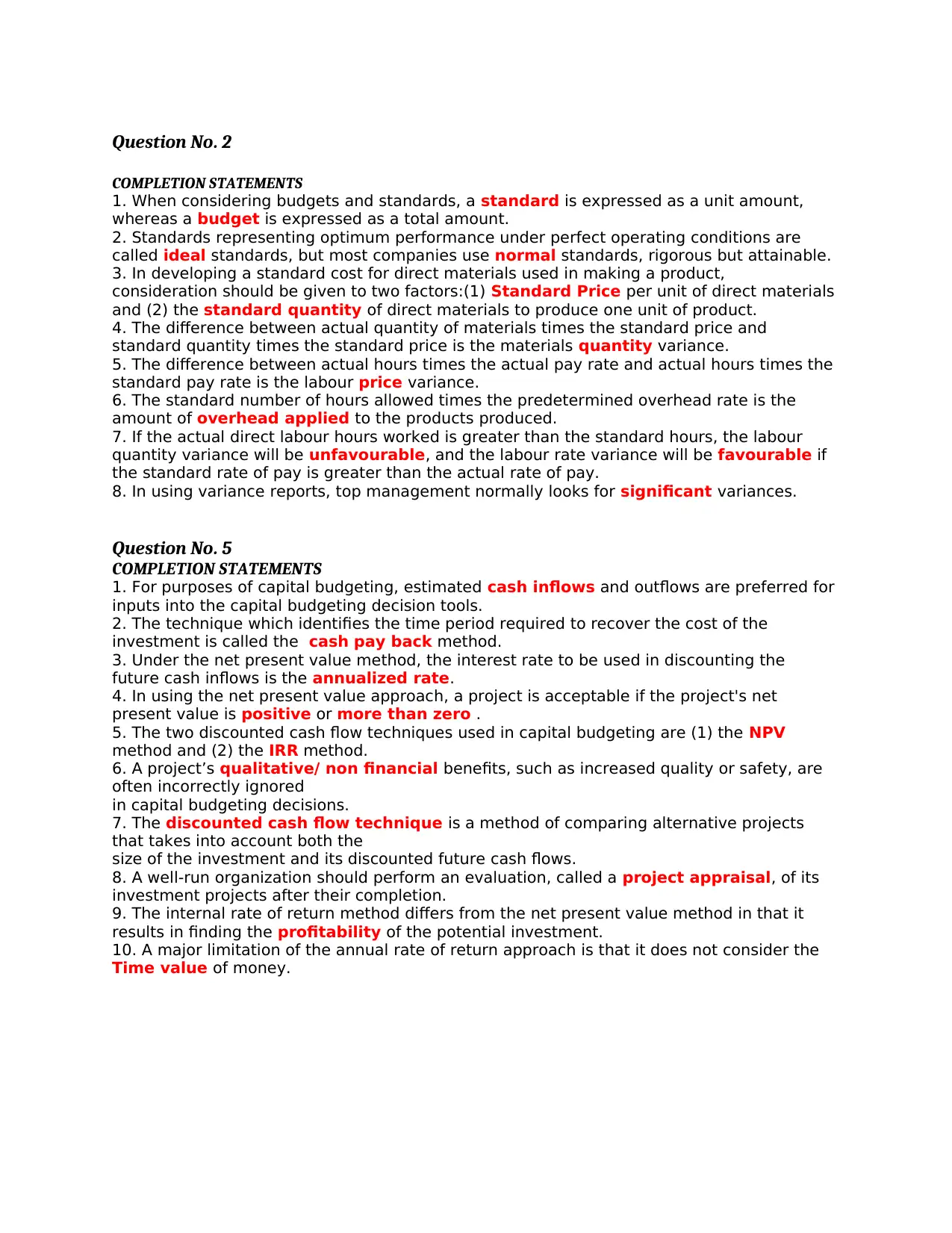Accounting Homework: Overhead Variance and Capital Budgeting Solutions
VerifiedAdded on 2022/08/25
|1
|517
|18
Homework Assignment
AI Summary
This document presents solutions to an accounting homework assignment. The first part addresses overhead variance analysis, calculating total, variable, and fixed overhead variances based on provided data for planned and actual production levels, direct labor hours, and overhead costs. The second part provides completion statements related to budgeting and standard costing, covering topics such as the difference between standards and budgets, ideal vs. normal standards, factors in standard cost development, and variance calculations. The assignment also includes completion statements on capital budgeting techniques, like cash payback, net present value (NPV), and internal rate of return (IRR), as well as the importance of considering qualitative benefits in capital budgeting decisions. The solutions offer a comprehensive overview of these core accounting concepts.







![[object Object]](/_next/static/media/star-bottom.7253800d.svg)